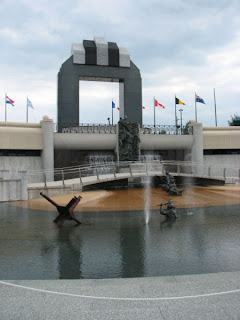Completing this assignment was not as difficult as I thought it would be, though it was not without its challenges. Even though I had never used it before last class, I went to google images to find all my pictures. This is an invaluable website for this type of assignment, and within mere seconds I had the bulk of pictures for my assignment. Writing the captions was also relatively easy since I have studied D-Day for a long time and know a lot about it. Also, most of the pictures came from websites that had information that accompanied the picture, making my job even easier. Putting the pictures on my blog was a little bit more problematic than I would have expected. Forgetting the advice from the class syllabus, I cleverly posted the pictures in the wrong order and had to delete my post and start over.
What I thought was most difficult was trying to tell the story through pictures only. When you are using words, you can say exactly what you want to say. When you are using pictures you find from the internet, you are trying to tell the story using other people’s pieces of a puzzle, which makes it a little trickier. For example, I was looking for a picture of a battlefield celebration after the Battle of Normandy was over, but could not find one. Had I been writing this with words, however, I simply could have described the celebration. This made the assignment a little awkward.
It is important to do this kind of assignment from time to time. It reminds historians that visuals are important, something many of them have forgotten. As the cliché goes, a picture is worth a thousand words, and by using these pictures and visuals, historians have another great tool to recreate history for students, readers, and other interested historians.
Monday, March 3, 2008
Assignment #5 - Photo essay of the American invasion of Normandy, June 6, 1944

These are the peaceful beaches of Normandy, France. While this is a contemporary picture, these peaceful beaches could not have known the carnage they would soon witness in the summer of 1944.
www.schoolshistory.org.uk/ddaybeaches.htm

Soviet Premier Josef Stalin had wanted an Allied cross-channel invasion of Nazi-occupied France since 1941, but it was not until 1944 that the plans were finalized. Here, this map shows the planned areas of attack.
http://france-for-visitors.com/france-maps/normandy/invasion-beaches-france-map.html

The beaches at Normandy were to be bombed before a massive, all out land invasion. Here, the commander of the operation, General Dwight D. Eisenhower, gives the orders to the paratroopers. The order: “Full victory – nothing else”
http://www.historyplace.com/worldwar2/timeline/dday.htm

Many of the American soldiers were not even 21, those of age were not very far past it. This illustrates the harrowing journey these soldiers had to take before landing at Normandy.
www.mikelavella.com/.../Dreamweaver/invasion.htm

The battle begins…
http://users.breathe.com/martin.reeve/Dday5.jpg

Thousands of American soldiers were either killed or were missing in action as a result of this battle, an American victory. This simple photograph represents the carnage and the human cost of the Battle of Normandy.
http://www.historyplace.com/worldwar2/ww2-pix/d-day05.jpg

The successful invasion of Normandy was a major turning point in World War II. Many world leaders, both American and foreign, have paid their respects to the men who fought at Normandy beach. Here, President Ronald Reagan speaks on the fortieth anniversary of the event.
http://www.medaloffreedom.com/RonaldReaganDDayTribute.htm

The National D-Day Memorial
http://en.wikipedia.org/wiki/Image:Nationald-daymemorial.jpg

Today, D – Day has become a part of our popular culture.
www.remaltd.com/images/oyun/pc/D%20Day.JPG
Subscribe to:
Posts (Atom)